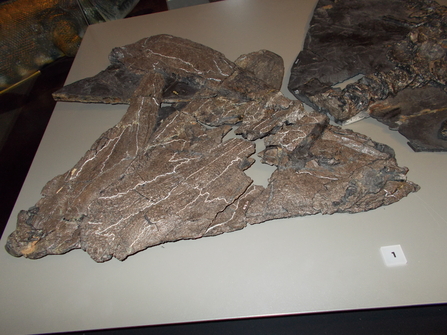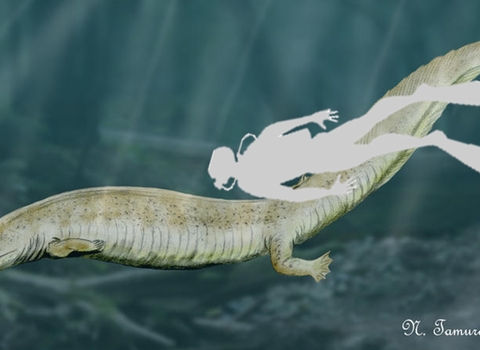What was it?
A 4.5m carnivorous amphibian. Palaeontologists call it Pholiderpeton or Eogyrinus and it is an Anthracosaur. Those scientific names have nice translations - scaly creeping animal; dawn tadpole; coal lizard.
How old is it?
It lived about 315 million years ago in the Carboniferous period.
Where did it live?
It hunted fish and other amphibians in warm sub-tropical coal swamps and its body shape helped it swim and catch its prey between the roots and vegetation underwater. It was a fearsome predator long before the dinosaurs were around.
Where are the fossils found?
The Dawn Tadpole was found in a shale in a coal mine at Newsham, near Blyth in the 19th century. Lots of animal and plant fossils were found by coal miners there. They gave them to a local man Thomas Atthey who was a grocer in Cramlington and an amateur palaeontologist. He studied them and gave most of them to a museum.

Image © Tyne and Wear Archives and Museums.
Where are the fossils now?
The Dawn Tadpole’s fossilized skull and bones are in the Great North (Hancock) Museum. It is one of a handful of very large amphibian fossils from this period of Earth’s history found anywhere in the world. Because it is so rare it is very important.
Are these animals still alive today?
Not these animals but its evolutionary descendants are other amphibians, reptiles, birds and mammals. It was an important link in the evolution from fishes to land animals.

